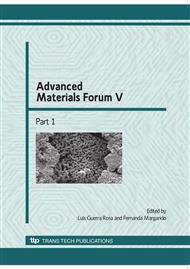p.550
p.556
p.564
p.571
p.578
p.585
p.592
p.597
p.605
The Relation between the Plunge Pressure and the Mechanical Properties of Friction Stir Welded 3mm Thick AA6082-T651 Sheets
Abstract:
Friction Stir Welding (FSW) is a relatively young technology in the field of welding. Its process parameters and their influence on weld quality are currently the topic of intense research. Present work focuses on the influence of the tool plunging force on the mechanical properties, microstructure and surface finish of friction stir welds. Three welds have been produced using the same tool rotation and traverse speed and different tool dimensions and plunging forces. Visual inspection, optical and scanning electron microscopy were undertaken to assess surface and dimensional features as well as to study microstructure. Bend, hardness and tensile tests were carried out to characterise the weld strength. Taken into account the plunging force values of the conducted welds, a relationship between weld properties and calculated welding pressures was created. Favourable welding pressure values are recommended.
Info:
Periodical:
Pages:
578-584
Citation:
Online since:
January 2010
Price:
Сopyright:
© 2010 Trans Tech Publications Ltd. All Rights Reserved
Share:
Citation:


